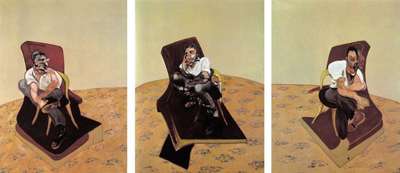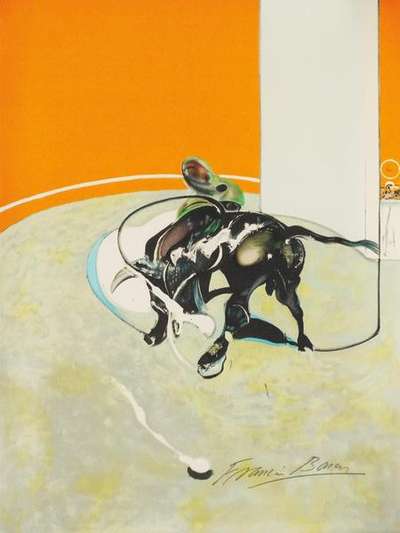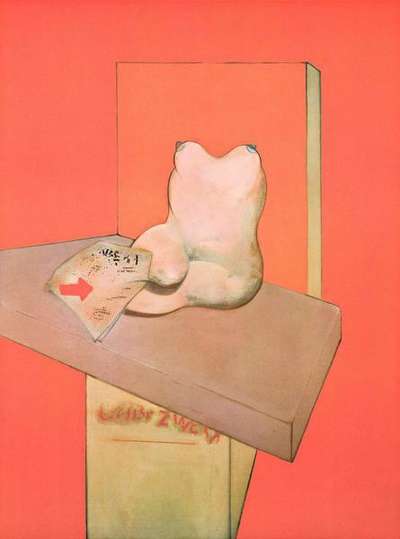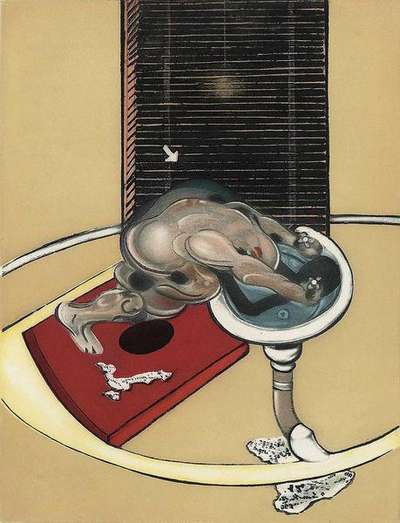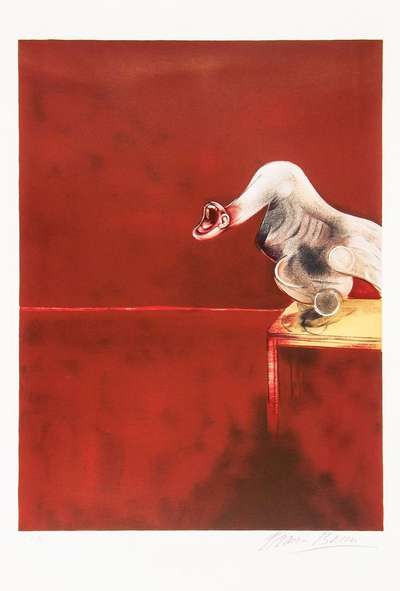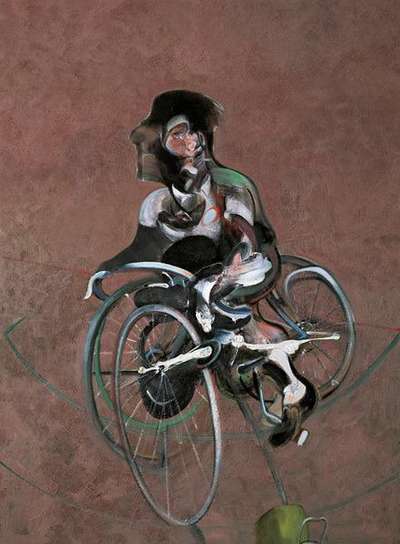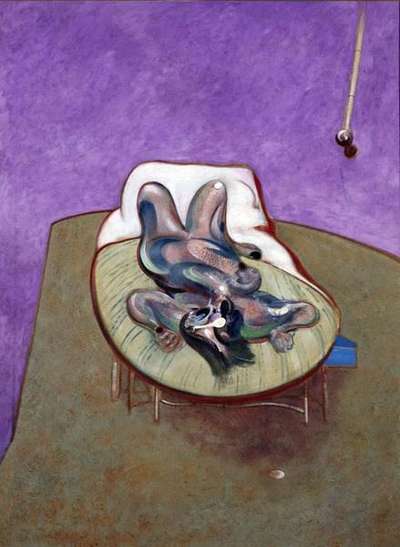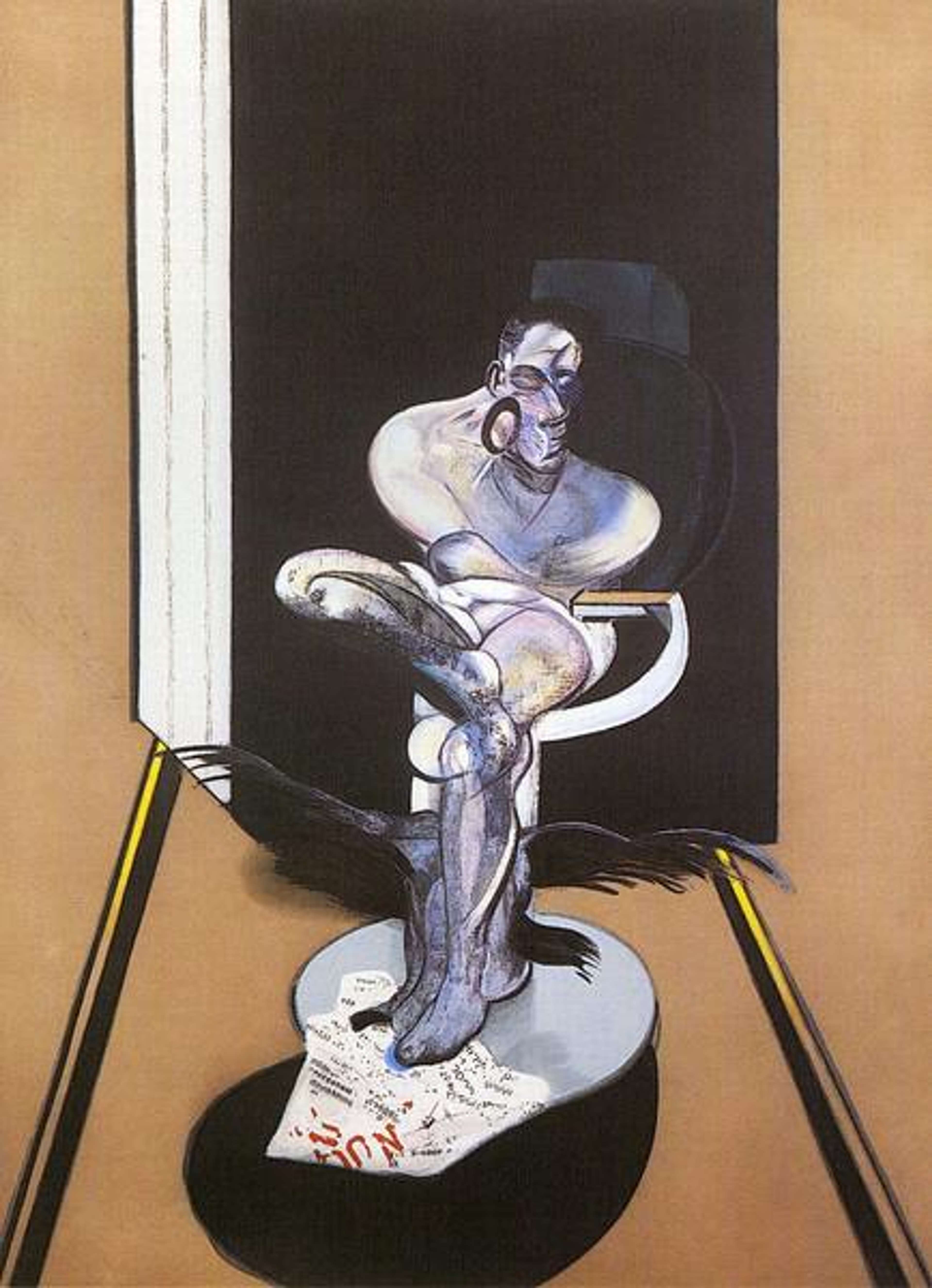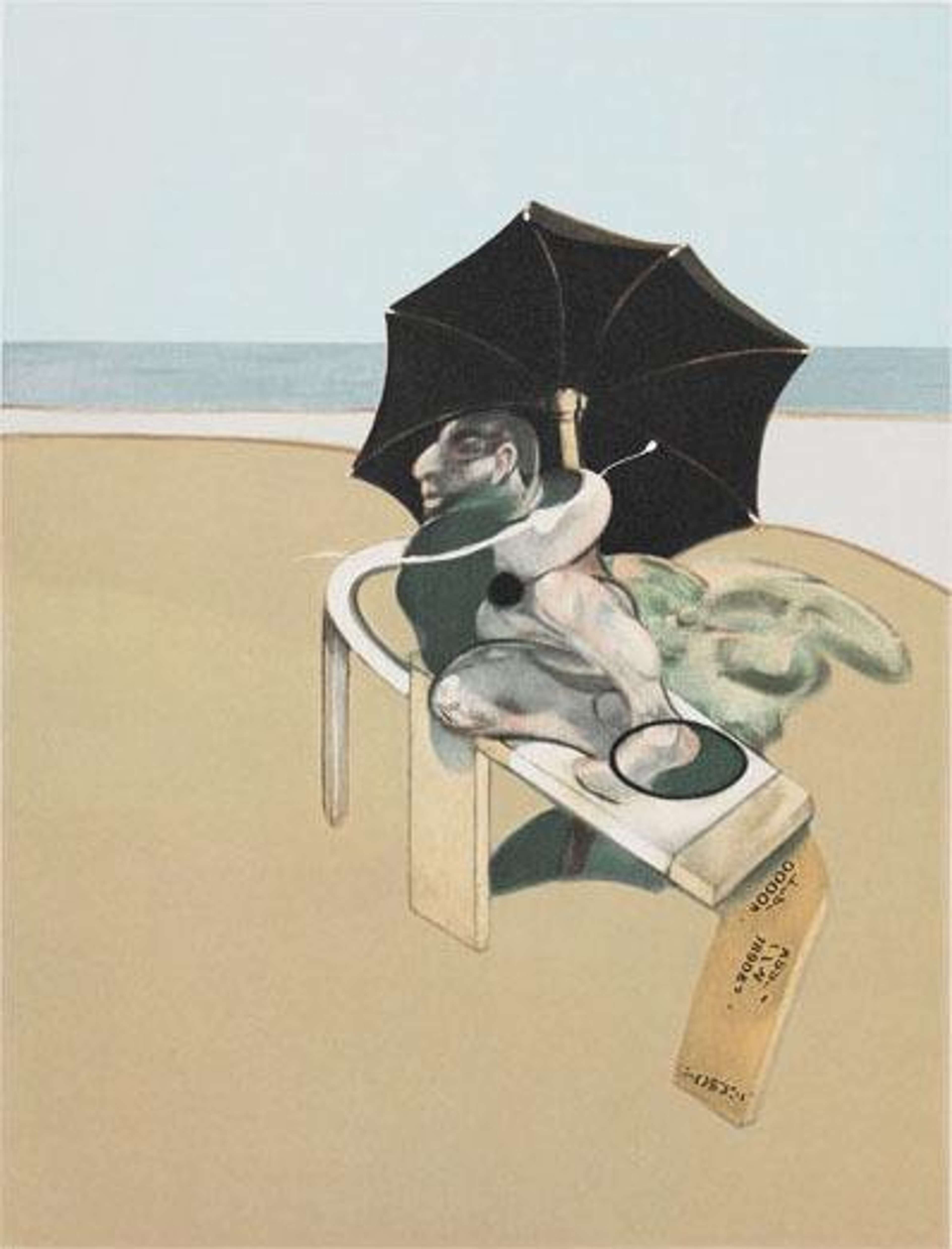Isabel Rawsthorne: Muse, Artist, and Costume Designer in Francis Bacon’s World

 Image © flickr / Three Studies of Isabel Rawsthorne 1967 © Francis Bacon 1967
Image © flickr / Three Studies of Isabel Rawsthorne 1967 © Francis Bacon 1967
Francis Bacon
58 works
Key Takeaways
Isabel Rawsthorne’s artistic legacy offers a unique lens through which to view the shifting roles of women in modern art - not merely as inspirations, but recognised as influential creatives in their own right. Her life and work underscore the multidimensional identity she carved for herself, as an icon of beauty, an active participant in avant-garde circles, and a disciplined artist whose creativity spanned painting, sculpture, and costume design. Her interactions with Bacon and other luminaries of the time, while transformative, ultimately served as a backdrop to her own creative evolution. As both muse and creator, Rawsthorne represents a powerful challenge to the conventional separation of artist and subject, embodying a full spectrum of artistic expression and individual agency in the modernist movement.
Isabel Rawsthorne was a captivating figure of 20th-century art, renowned as a muse to Francis Bacon, but equally significant as an artist and costume designer in her own right. Her distinctive beauty, progressive spirit, and intense creative drive made her a natural subject for artists like Bacon, who found inspiration in her complex personality and bold presence. Yet Rawsthorne was much more than a muse; she was an accomplished painter, a modernist sculptor, and a respected designer who defied conventions. Her connection to Bacon was profound and transformative for both, as a woman who defined and transcended the role of muse.
 Image © Wikimedia Commons / Isabel © Jacob Epstein 1933
Image © Wikimedia Commons / Isabel © Jacob Epstein 1933Who Was Isabel Rawsthorne?
Born Isabel Nicholas in 1912 in East London and later raised in Liverpool, Rawsthorne was a pioneering artist whose life bridged the vibrant bohemian circles of both London and Paris. Her time at London’s Royal Academy, whilst formative, was one she found restrictive and, in many ways, resistant to the progressive ideas shaping the art world at the time. Disillusioned by its conservatism, she connected with a network of avant-garde thinkers and artists, ultimately setting her on a path that would defy convention and define her unique legacy.
Rawsthorne’s early career unfolded through close relationships with some of the most renowned artists of her time. Her artistic journey was closely tied to her relationships, starting with the sculptor Jacob Epstein, a pivotal figure in her life who was both her collaborator and lover. Through their relationship, Rawsthorne became part of an artistic milieu that included artists such as Pablo Picasso and André Derain, whom she met on frequent visits to Paris. Her enduring friendship with Alberto Giacometti, whom she met in 1935, was particularly significant. Giacometti’s first sculpted bust of her in 1936 is a testament to the impact she had on him and on the Parisian art world, a place where her striking looks and intellectual liveliness made her both a muse and a peer.
While her beauty and presence inspired works by others, Rawsthorne was also a serious artist in her own right. Her work extended beyond painting and drawing, as she ventured into the world of costume and set design, notably for ballet and opera productions at London's Royal Opera House. This foray into theatre allowed her to bring her unique artistic perspective to life on stage, crafting costumes that captured movement and emotion, blending her visual artistry with a sense of physicality. Her designs were considered groundbreaking at the time, adding layers of depth to the productions and bridging the worlds of visual and performing arts.
Yet, despite her own considerable accomplishments, it is often Rawsthorne’s connection to Francis Bacon that has defined her role in art history. Their friendship, creative exchanges, and her role as one of his muses gave her an indelible place within the modern art narrative. Her unconventional beauty and enigmatic persona fascinated Bacon, who painted her repeatedly, finding in her a subject that allowed him to explore themes of identity and presence. Though many knew her as an artist’s muse, her real legacy is far greater. Rawsthorne’s life and work pushed the boundaries of what was expected of women in the art world of her time, and today she is recognised as a key figure in the modernist movement.
Isabel Rawsthorne and Francis Bacon’s Artistic Connection
Rawsthorne as Bacon’s Muse
The connection between Rawsthorne and Bacon transcended the traditional artist-muse dynamic, forming a unique relationship that would leave an enduring impact on Bacon’s body of work. Their friendship emerged in the bohemian circles of post-war London, a period when Bacon was in the process of refining his now-iconic style. Sharing an affinity for the undercurrents of life in London’s Soho - its smoky clubs, bars, and avant-garde gatherings - Rawsthorne and Bacon developed a bond that was rooted in mutual respect and creative energy.
Bacon, known for his dark, often visceral portraits that explored the human condition's raw and chaotic side, saw in Rawsthorne a living paradox that embodied both resilience and fragility. Her appearance and spirit were compelling to him; she was both muse and mirror, someone who held up a reflection of his own uncompromising worldview. For Bacon, Rawsthorne symbolised a life lived freely and fiercely, unafraid of societal constraints, qualities that resonated deeply with his own explorations of human vulnerability and psychological intensity. Art historian Michael Peppiatt described their connection as having an “animal exuberance”, Rawsthorne’s vivid energy offering a contrast to the darker, existential elements in Bacon’s work. Through Rawsthorne, Bacon pushed the boundaries of representation and delved into the interplay between identity, appearance, and inner life.
Bacon’s Portraits of Isabel
In Bacon’s portraits, Rawsthorne emerges as a powerful and enigmatic figure, rendered with a striking combination of brutal honesty and profound respect. Rawsthorne’s portrayal in Bacon’s work was anything but conventional; her presence on his canvases reflects not only her physical form, but also the complex influence she had on his exploration of identity, human form, and psychological depth. Bacon’s iconic Portrait of Isabel Rawsthorne Standing in a Street in Soho (1967) exemplifies this influence in a particularly unique manner. Unlike much of his work, which is often set in confined, shadowed interiors, this portrait places Rawsthorne outdoors. This setting - a rare departure from Bacon’s enclosed spaces - adds a dynamic, almost cinematic quality to the piece, suggesting her engagement with her environment and underscoring the strength of her individuality. It is as if Rawsthorne herself cannot be confined, her vivid personality demanding space and openness, even within the artist’s otherwise claustrophobic world.
Beyond this singular portrait, Bacon immortalised Rawsthorne in a series of triptychs that delved into her character through contorted, expressive forms. The triptych format, central to Bacon’s body of work, provided him with a structure to explore fragmented identities and shifting perceptions. In these multi-paneled compositions, Rawsthorne’s distinctive features are dissected and reassembled, yet they retain an undeniable force and cohesion. In Three Studies for Portrait of Isabel Rawsthorne (1966), Bacon deconstructs her face into distorted perspectives, with each panel capturing a different angle, creating a fractured but potent unity. Her face appears at once familiar and elusive, a blend of recognisable features and abstracted forms that evoke the complexity of her character. This technique reflects Bacon’s approach to Rawsthorne as more than a static subject; she is a multifaceted individual whose essence resists a singular, fixed portrayal.
The influence Rawsthorne had on Bacon was as much about her inner strength and complexity as her physical presence. Through these portraits, Rawsthorne emerges not merely as a subject, but as an embodiment of Bacon’s own philosophical questions about identity, perception, and the chaotic beauty of existence. In painting Rawsthorne, Bacon captured not only her face but also her enduring impact on his art, her presence becoming a lasting element in his unflinching exploration of what it means to be human.
 Image © flickr / Portrait of Isabel Rawsthorne Standing in a Street in Soho © Francis Bacon 1967
Image © flickr / Portrait of Isabel Rawsthorne Standing in a Street in Soho © Francis Bacon 1967Isabel Rawsthorne as an Artist in Her Own Right
Artistic Style and Themes
Rawsthorne’s work as a painter explored themes of transformation, movement, and the fluid nature of identity, emphasising the deep connections between human experience and the natural world. Her artistic vision, rooted in a childhood spent sketching animals, initially embraced a naturalistic style. Over time, her visual language evolved toward skeletal, almost primal forms, capturing an essence of movement and identity that feels both visceral and timeless. This progression was shaped by her study of Renaissance art and her observation of ballet dancers, whose gestures and physicality deeply influenced her portrayal of dynamic, evolving subjects.
Rawsthorne’s Migration (1912-1992) exemplifies her unique ability to blend naturalistic and abstract forms into haunting, ethereal compositions. In these works, birds and animals appear as spectral figures in vast, existential landscapes, rendered in layered, textured strokes that capture both movement and fragility. Her animals appear neither purely representational nor completely abstract, existing instead as symbols of transience and resilience.
Influence of Her Peers on Her Work
The stylistic influences of her artistic peers - particularly Giacometti, Picasso, and Bacon - are evident in her work, yet Rawsthorne succeeded in crafting a style that was distinctly her own. Giacometti’s explorations of existential isolation and elongated forms found resonance in Rawsthorne’s approach to the human figure, which she depicted as an ephemeral, nearly spectral presence. His influence is visible in her slender, delicate portrayals, such as Study Of A Ballet Dancer (1960), where bodies and forms often appear as if caught between material existence and ghostly otherworldliness. Similarly, her portrayals reflect Bacon’s fascination with the distortion of bodies and faces, seen in works such as Alan Rawsthorne (1966), yet Rawsthorne diverged from his visceral violence, infusing her distortions with a sense of transformation rather than torment.
Rawsthorne’s body of work stands as a testament to her unique perspective and unyielding artistry. Her exploration of identity, movement, and the delicate balance between nature and humanity attests to her sophisticated understanding of life’s complexities, marking her as an artist whose legacy deserves recognition and celebration in its own right.
Isabel Rawsthorne’s Role in Costume and Set Design
Transitioning from Painting to Costume Design
Rawsthorne’s journey into costume and set design marked a significant expansion of her artistic repertoire, channelling her talents into new realms of expression. During the 1950s, she became a sought-after designer for some of the most prestigious stages in London, notably the Royal Opera House and Covent Garden. Her work here was a natural extension of her artistic vision, as she brought the same sensitivity to movement, form, and emotion that defined her paintings into the world of performance. Rawsthorne’s approach to costume design was rooted in her background as a fine artist, lending a sense of sculptural quality to the garments she created. Rather than focusing strictly on period-accurate or conventional designs, Rawsthorne emphasised expressive forms, dynamic colours, and bold silhouettes. Each piece was crafted with an eye to enhance the emotional resonance of the characters, drawing the audience into a world that felt both authentic and transformative.
Influence of the Theatrical World
This immersion in the theatrical arts profoundly influenced her visual artwork, infusing her later pieces with a dynamic quality. Rawsthorne’s depictions of dancers like Margot Fonteyn and Rudolph Nureyev capture not only their physical forms, but also the ethereal nature of movement itself. These portraits reveal her deepening fascination with the expressive potential of the human body, where grace and tension coexist, and movement becomes an extension of personality and mood. Through her portraits, she created a visceral sense of energy, as if her subjects were caught mid-motion, suspended in moments that are fleeting yet powerful. The theatrical world’s emphasis on storytelling through visual elements is reflected in her later paintings, where the stage’s influence brought a newfound intensity, pushing her to explore larger, more expressive compositions.
The Legacy of Isabel Rawsthorne in Modern Art
For much of her life, Rawsthorne was primarily recognised in relation to the towering artists with whom she shared friendships, studios, and creative inspiration, who famously captured her presence on canvas in ways that have both defined and limited her legacy. However, recent reexaminations of her work and life have revealed Rawsthorne as a powerful, self-directed artist whose contributions to 20th-century modernism deserve singular recognition. Beyond the role of muse, Rawsthorne’s legacy is that of a fiercely original creative force, whose oeuvre combines elements of reflection, abstract modernism, and a profound connection to nature and movement. Her work, once overshadowed, now invites viewers into a complex world where nature, identity, and the ephemeral nature of life coalesce in forms both striking and sublime.












